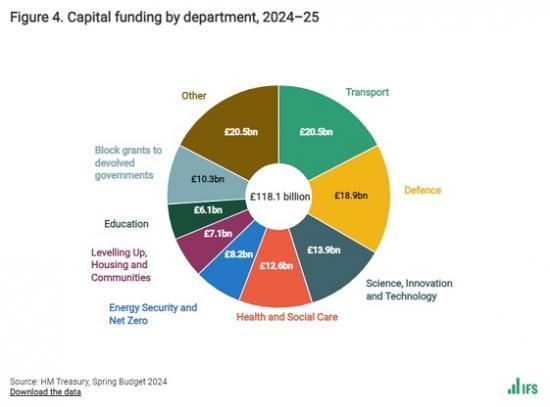Public Investment: What You Need To Know
26th April 2024

The Institute for Fiscal Studies has published an explainer report setting out what public investment is and how Labour and the Conservatives differ on their approaches.
Everything you wanted to know about UK public investment but were too afraid to ask - including analysis of Labour and Conservative plans.
What is public investment?
Public investment, or public capital expenditure, is spending by the state on the creation of fixed, long-term assets. The classic examples are spending on physical assets such as roads, buildings, bridges and tunnels - things that last. This is distinct from ‘current' expenditure - i.e. spending that does not create fixed assets (such as spending on the state pension, drugs for NHS patients or the wages of civil servants) - which makes up the majority of total government expenditure.
Public investment is important partly because it supports the delivery of public services - for example, providing schools for pupils to learn in or hospitals for doctors to operate in. It also plays a role in shaping wider economic growth.
A reliable transport network can support the economy by facilitating the movement of goods and people, for example, and public investment in R&D can support – and influence the direction of – technical innovation, including by ‘crowding in' private investment.
Depending on the specific measure used, the public sector currently accounts for roughly 15–20% of total investment in the UK; the rest comes from individuals, UK businesses and foreign direct investment.
Public investment is a policy issue of central importance for public service delivery, economic growth, the UK's climate ambitions, and much else besides. Indeed, many economists view low rates of public investment as a key contributing factor to the UK's lacklustre productivity performance.
Both the Labour and Conservative parties are presently committed to spending plans that would see public investment decline as a share of national income over the next parliament. Both are also committed to a fiscal rule that requires debt to be stabilised by the end of the forecast period; in present circumstances, that constrains the ability of the government to borrow to invest.
The question then becomes one of how much to prioritise investment for tomorrow versus consumption today. This will be a key political trade-off for the next government.
Read the full report HERE
